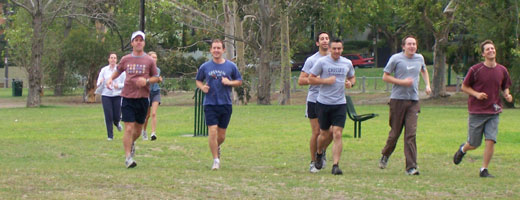the condition or state of being specific (source)
spec.i.fic -noun
something particularly fitted to a use or purpose. (source)
gen.er.al.i.ty -noun
the quality of being general or widespread or having general applicability (source)

CrossFit is a non-specific fitness model and proudly so. It does not promote development of capabilities specific to one pursuit but rather aims to develop participants in a general way. This generality enables the CrossFit athlete to become adept in many and varied physical challenges, something that other specific models do not manage very well.
Is this lack of specificity a good thing or a bad thing?
First, let's take a look at it from the perspective of a non-sporting participant. Your everyday mum, dad, friend or sibling is not going to greatly benefit from hours upon hours of training designed to develop sports-specific attributes such as sprinting technique. On the other hand, learning how to lift, throw, run, push, pull and carry will be of benefit to the day to day life of the vast majority of trainees.
Now, how about those athletes? It is definitely true to say that specificity in training develops athletes that perform well in their specific sport. Learning - for example - how best to throw a ball or jump to maximum height is advantageous in many sports. So, specificity definitely has a place. In fact, in some cases non-specific training can be detrimental to an athlete. Therefore, any non-specific training must be considered based on its merits. That said, is there a single athlete out there who would't benefit from training that develops general strength and metabolic conditioning? These forms of general training are also very, very important to success in athletic endeavours.
In summary, both specificity and generality have a place in the fitness world. It is important to understand however that for the vast majority of trainees a general program that develops strength, speed, endurance, co-ordination, power, agility and so forth is the most appropriate choice.









Post a Comment
Create a Link
<< Home